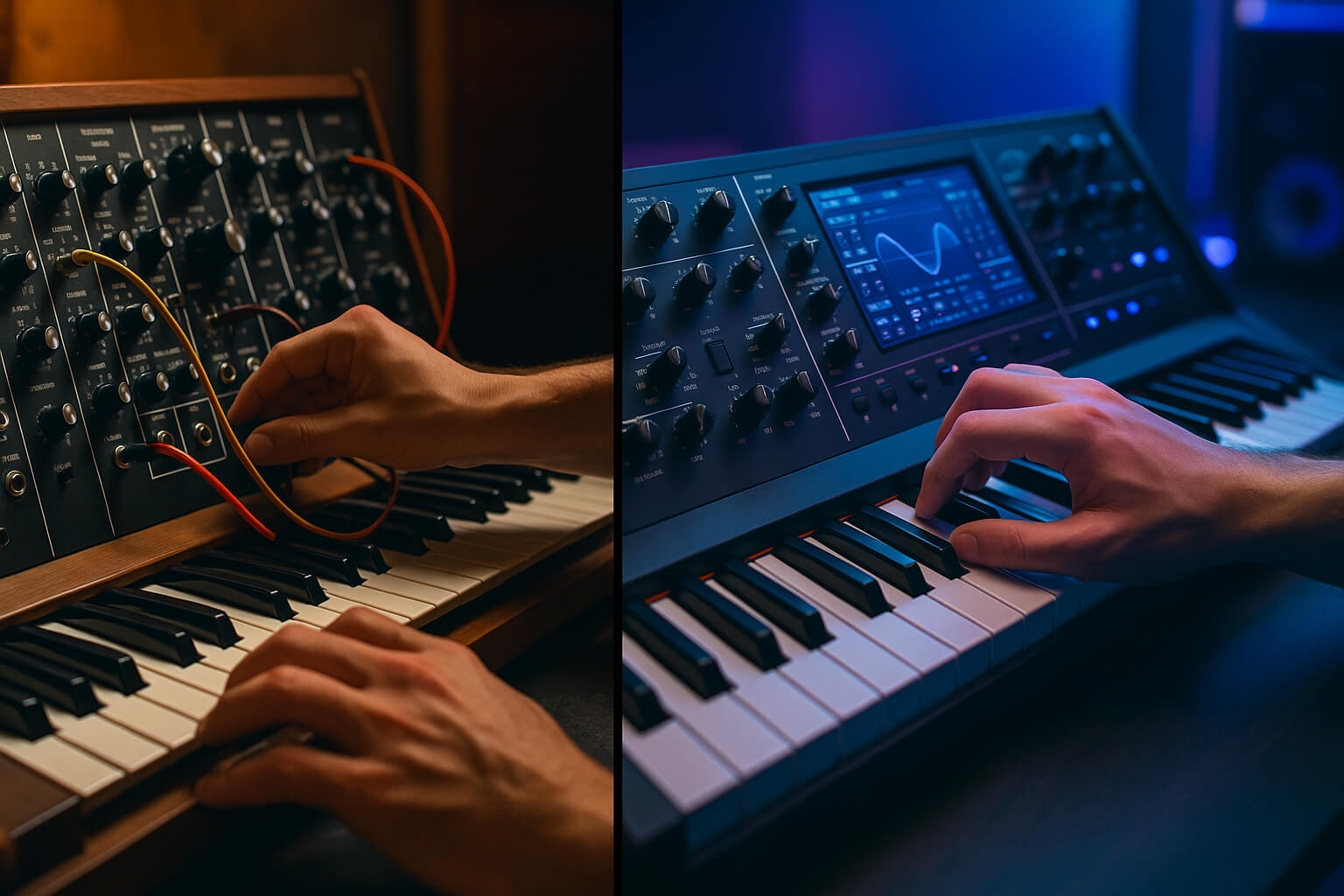July 08, 2025

Synthesizers are a cornerstone of modern music production, from pop and hip-hop to electronic and ambient genres. Whether you’re layering warm textures or designing cinematic soundscapes, understanding the difference between analog and digital synths can dramatically impact your sound.
A synthesizer is an electronic instrument that creates sounds by generating and combining signals of different frequencies. These signals are shaped by oscillators, filters, envelopes, and modulators to produce unique timbres.
Synths can mimic real instruments, create never-before-heard tones, or emulate retro sounds from decades past.
Analog synthesizers generate sound using analog circuits and electrical signals. These synths typically offer tactile controls like knobs and sliders, giving you hands-on command over sound-shaping.
Analog synths are favored by purists and vintage sound enthusiasts for their “alive” and unpredictable nature.
Digital synthesizers generate sound using digital signal processing (DSP). They can emulate analog tones or create entirely new sonic textures.
Digital synths are ideal for studio production, sound design, and composers who need layered, evolving patches.
Many producers blend both worlds — using analog for warmth and character, and digital for versatility and layering.
Need synths to practice with? Try Our AI Music Generator for Free and experiment with AI-based sound creation.
Understanding analog and digital synthesis empowers you to make more intentional production choices. Each has its strengths, and together, they form a sound designer’s dream toolkit.
Whether you’re exploring your first software synth or investing in hardware, the key is experimentation. Start tweaking, start playing — and let your sound evolve.
Stay up to date with the latest tips, expert insights, product reviews, and step-by-step guides to help you grow, create, and succeed—no matter your industry or passion.